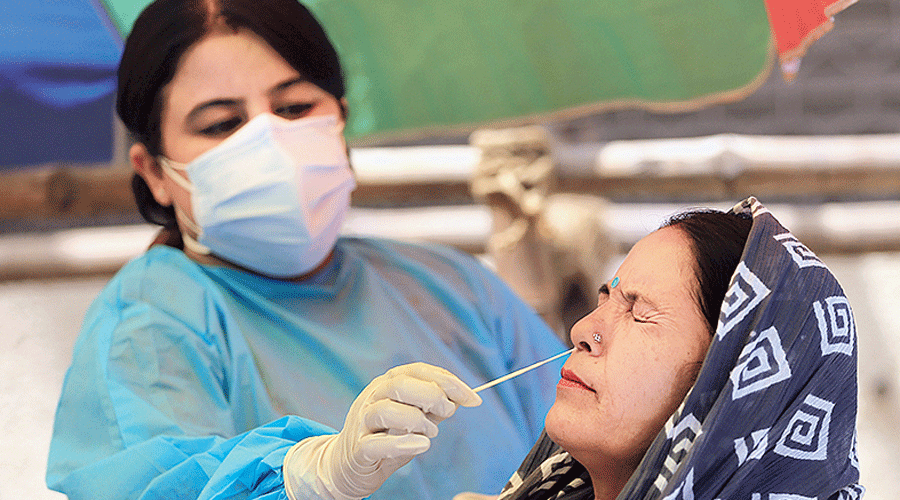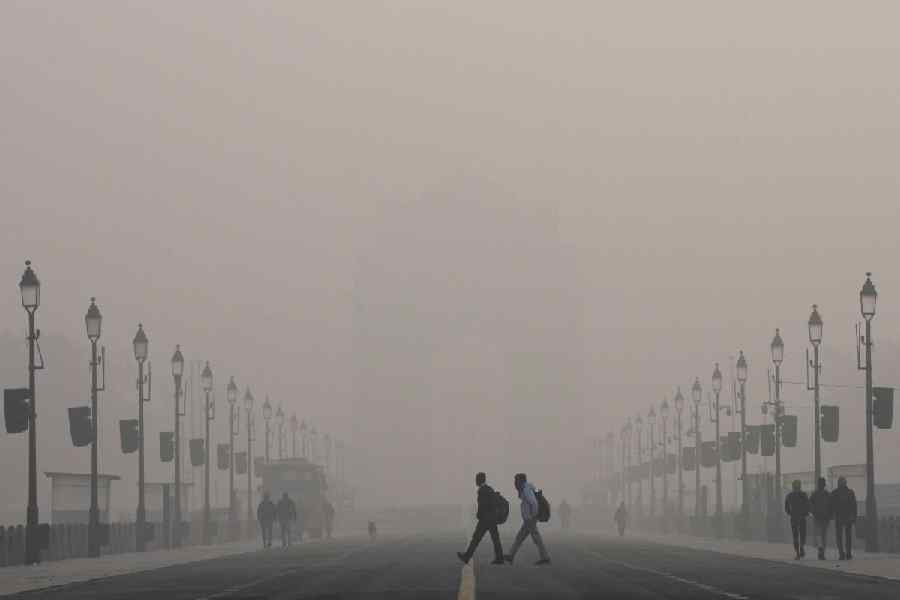The Union health ministry on Wednesday asked states to enhance surveillance, testing and tracking of respiratory infections, flagging increases in Covid-19 positivity rates and new infections in 115 districts in nine states over the past month.
The rise in positivity and infections in Bengal, Andhra Pradesh, Arunachal Pradesh, Assam, Himachal Pradesh, Kerala, Maharashtra, Mizoram and Tamil Nadu are occurring amid inadequate surveillance and testing that could cause the infection to spread further, health officials said.
A high positivity rate — the proportion of positive cases among those tested — is an indicator of either a growing epidemic or low levels of testing.
Four districts in Bengal — Bankura, Calcutta, Darjeeling and West Burdwan — had positivity rates exceeding 30 per cent during the week ending on July 19, according to the health ministry’s data.
As many as 16 other districts in Bengal had positivity rates above 10 per cent.
Health experts have said the positivity rate needs to be as low as possible but at least below 5 per cent.
“There is poor surveillance, poor testing and below average vaccination in many states undergoing the present surge,” said Vinod Paul, the chair of the national Covid-19 task force and member (health) with Niti Aaayog, the government’s top think-tank.
Health secretary Rajesh Bhushan, in a meeting with state officials, said states need to “effectively and strictly” monitor Covid-19 cases under home isolation to ensure that they do not intermingle with people in their neighbourhoods and spread the infection.
The health ministry said the average tests per million population was below the national average in Bengal, Andhra Pradesh, Arunachal Pradesh, Assam, Maharashtra and Himachal Pradesh. The share of RT-PCR tests — more reliable than antigen tests — is below the national average in Bengal, Kerala and Himachal Pradesh.
Bhushan asked the states to urgently address the declining trend of RT-PCR tests. All districts reporting high positivity rates need to increase their proportion of RT-PCR tests, Bhushan said, cautioning that any laxity could result in deterioration of the situation in these districts.
Randeep Guleria, director of the All India Institute of Medical Sciences, New Delhi, who participated in the meeting, advised states to be attentive to changing patterns, if any, in the clinical manifestation of hospitalised Covid-19 patients.
India’s seven-day average of daily new infections has grown from about 11,000 cases to 18,000 cases over the past month. Health experts believe immune-evasive coronavirus sublineages, waning immunity and absence of Covid-19 precautions are driving the current rise.
Immune responses generated by earlier Covid-19 waves and the vaccination campaign are expected to protect most from severe disease and death. But, experts say, a small proportion of vulnerable people such as those with underlying health disorders remain susceptible to severe disease.
The health ministry on Wednesday recorded 25 Covid-19 deaths over the previous 24 hours.











